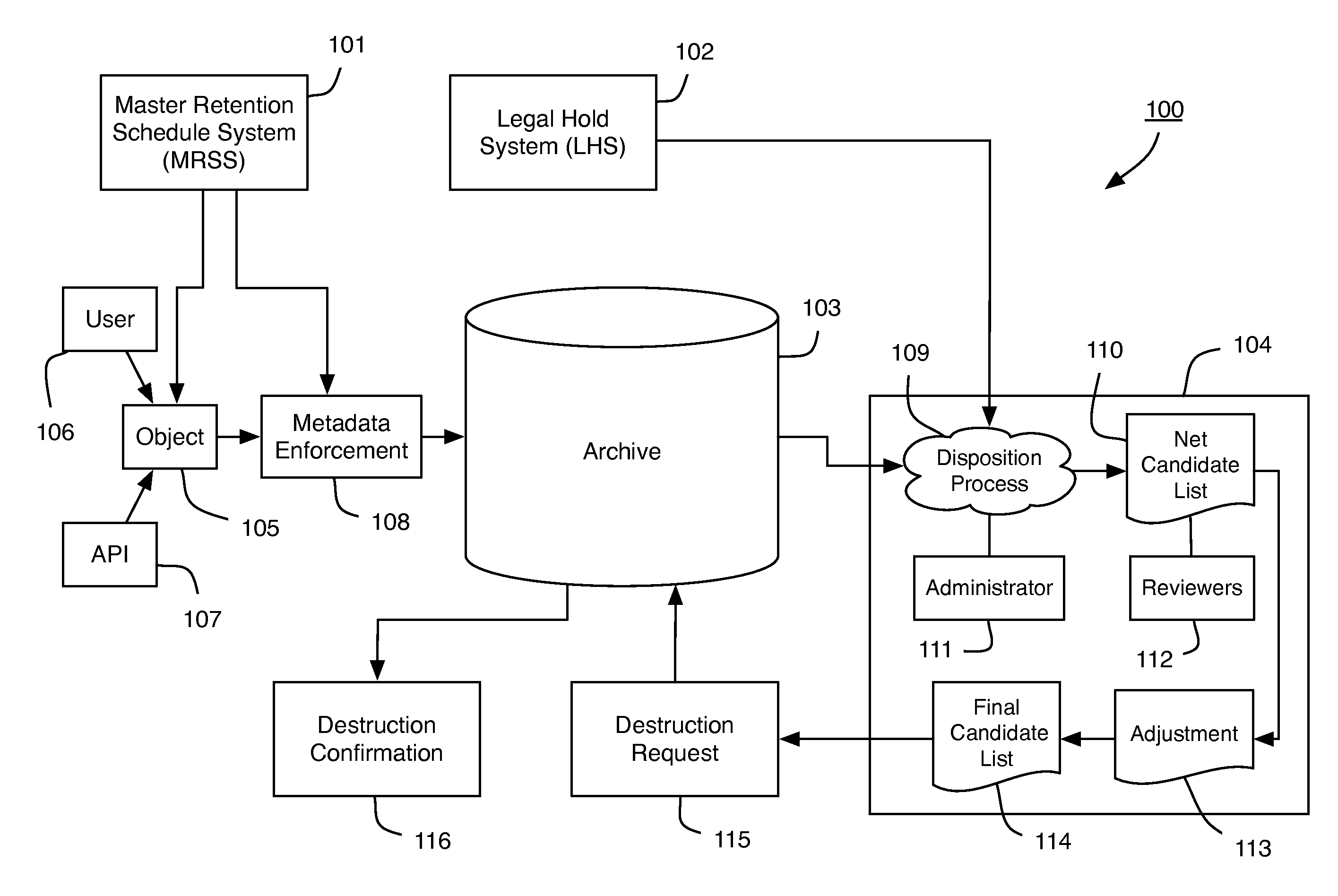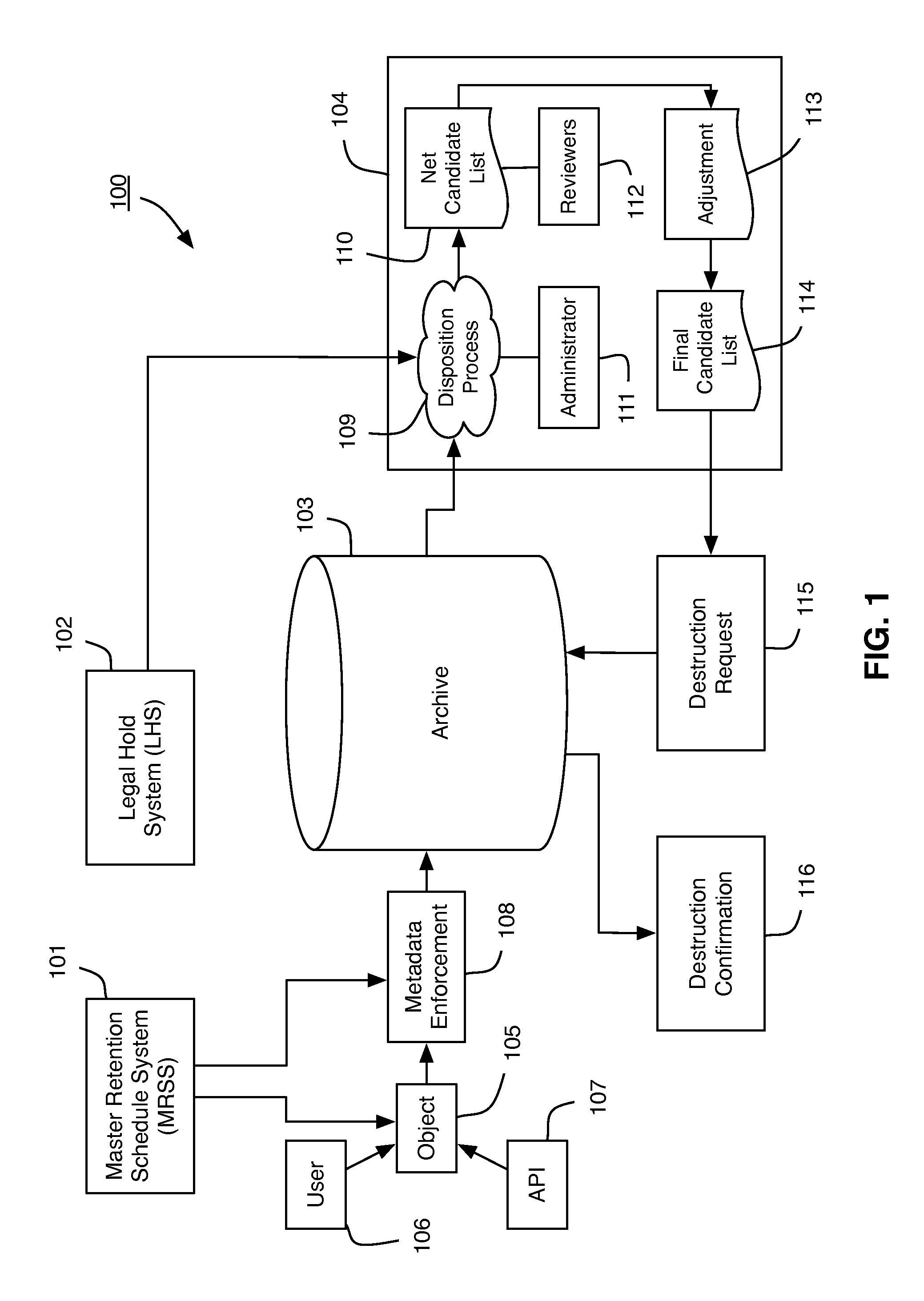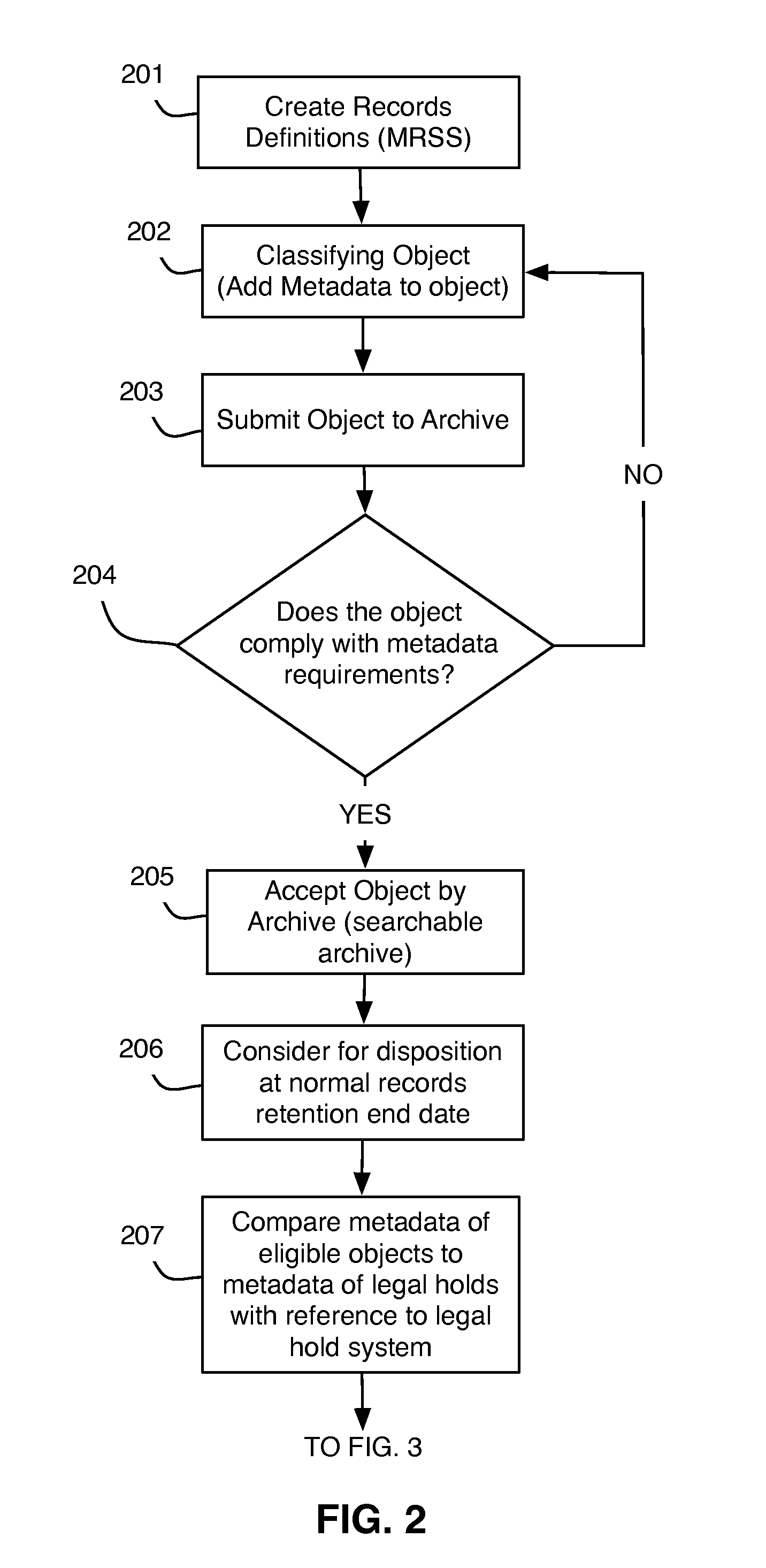Records archive disposition system
- Summary
- Abstract
- Description
- Claims
- Application Information
AI Technical Summary
Benefits of technology
Problems solved by technology
Method used
Image
Examples
Embodiment Construction
[0012]This application discloses an integrated computing system and computer-implemented method for receiving, indexing and storing archive content across one or more archives that accounts for record deletion based on a retention period associated with the content, with the ability to implement one or more legal holds that are also accommodated by the deletion or disposition process. The preferred record archive disposition system and method integrates implementation of the legal hold into the regular accounting and deletion of archive content in addition to the retention period associated with that content.
[0013]The implementation of a legal hold is simplified by way of logical separation between the application of the legal hold and the records stored in the archive. Notably, metadata attributes associated with the archived records are also utilized by the legal hold process to define the scope of the legal hold, and thereby permit automated comparison between record attributes a...
PUM
 Login to View More
Login to View More Abstract
Description
Claims
Application Information
 Login to View More
Login to View More - R&D
- Intellectual Property
- Life Sciences
- Materials
- Tech Scout
- Unparalleled Data Quality
- Higher Quality Content
- 60% Fewer Hallucinations
Browse by: Latest US Patents, China's latest patents, Technical Efficacy Thesaurus, Application Domain, Technology Topic, Popular Technical Reports.
© 2025 PatSnap. All rights reserved.Legal|Privacy policy|Modern Slavery Act Transparency Statement|Sitemap|About US| Contact US: help@patsnap.com



